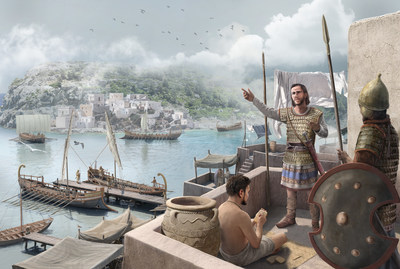
The study by Eberhard Zangger, Alper Aşınmaz, and Serdal Mutlu demonstrates that a tightly woven network of long-lived Bronze Age settlements exploited the natural resources in western Turkey, a region that was thus far considered a cultural no-man's land. A preliminary study in 2016 had proposed the name "Luwian culture" for the population between the well-studied Mycenaeans in southern Greece and the Hittites in central Asia Minor.
Making use of a geographic information system (GIS) and taking into account 30 physio-geographic factors, the scientists were able to determine which sites people preferred for their settlements. The most important factors were proximity to drinking water and to fertile farmland. Short distances to potential transportation routes also played a role. In contrast, ore deposits, which were abundant in the region, apparently had no influence on settlement patterns.
The study also provides arguments for the identification of the so-called Sea Peoples, a motley band of robbers who raided the coastal cities of the eastern Mediterranean after 1200 BCE. Excavations at Enkomi on Cyprus had brought to light as early as 1952 a document that has now been identified as a letter from a Cypriot admiral. The navarch, while on patrol near the island of Samos in the southern Aegean, unexpectedly encountered a large fleet coming from Troy. From a protective harbor, he sent the letter to request reinforcements. Hence, the hitherto mysterious Sea Peoples turn out to be a temporary military alliance of Western Anatolian petty states.
Source: Eberhard Zangger, Alper Aşınmaz and Serdal Mutlu (2022): "Middle and Late Bronze Age Western Asia Minor: A Status Report." In: The Political Geography of Western Anatolia in the Late Bronze Age, edited by Ivo Hajnal, Eberhard Zangger, and Jorrit Kelder, Archaeolingua Series Minor 45, 39–180. Archaeolingua, Budapest. ISBN 978-615-5766-54-1.
Contact: Eberhard Zangger, Luwian Studies, Email Contact, Tel. +41 44 250 74 90
Photo:
https://mma.prnewswire.com/media/1886885/Port_of_Limyra_1192BCE.jpg
Logo:
https://mma.prnewswire.com/media/1886886/Luwian_Studies_Logo.jpg

| Contact: |
| Company Name: Luwian Studies
|









